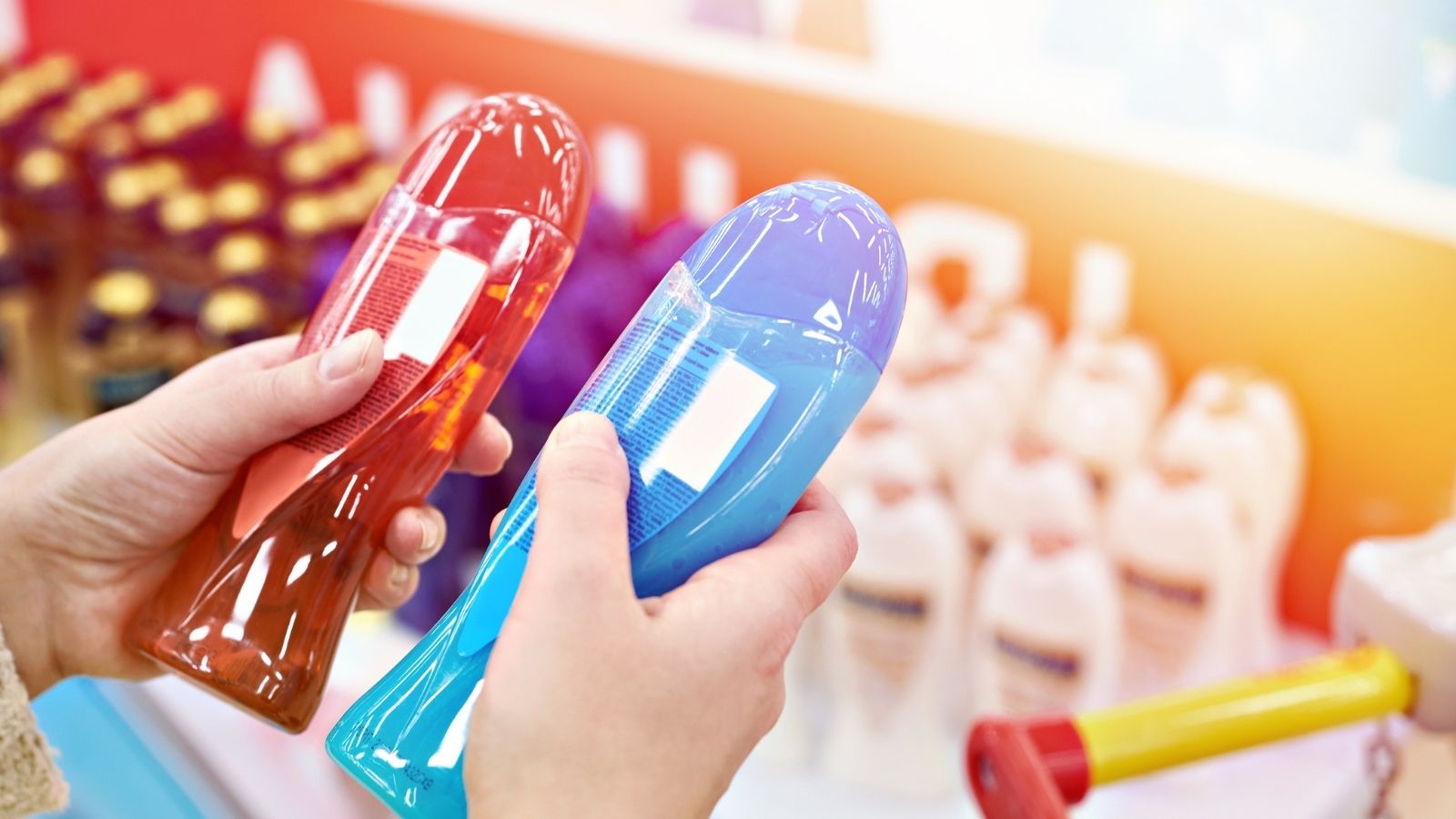The number of microplastics on our list keeps increasing. There are over 1.000 microplastics and skeptical microplastics that we are screening at the moment with the Beat the Microbead app. As consumers, it is impossible to remember this exhausting list. It is much harder to understand what these ingredients are and why we should be aware of them. That’s why today, we pick the two most common microplastics used in our personal care and cosmetic products: dimethicone and carbomer. Let’s explore together why these ingredients are the ones to watch out for in your care products.

What are microplastics?
Before we dive into it, let’s take a moment to clarify what microplastics are. Traditionally, microplastics are defined as fragments of any plastic less than 5 mm in length. This definition only considers solid forms of plastic. This is because the term microplastic first appeared in the marine litter context. Microplastics in the marine litter context consist of smaller fragments of big plastic trash that ended up in the ocean, such as bottles, packaging, or fishing nets. Today this kind of microplastic is also known as secondary microplastic.
Primary microplastics consist of plastic that is intentionally added to everyday products such as our care products, detergents, paints, etc. The EU is planning to ban intentionally added microplastics shortly. However, the microplastic definition emerging under this legislation is full of loopholes.
Under our campaign, we have a broader view on microplastics. Our focus relies on if these synthetic polymer substances are persistent, bioaccumulative, and/or toxic, if they are readily biodegradable in all environmental circumstances and if they pose a risk for human health. If so, then we screen these substances through our app and campaign. A lot of the time, the information supporting the environmental health claims is limited or missing. In this case, we chose to go with the precautionary principle. We put the substance on our watch list until sufficient proof is provided that eliminates environmental risk concerns.
What is Dimethicone?
In our database, dimethicone is on the top of the chart in the number 1 position. It is present in about 20% of 29.413 products registered in our database.
WHAT: Dimethicone, also known as polydimethylsiloxane or dimethylpolysiloxane, is a silicone-based polymer. It is one of the most common ingredients used in cosmetics and care products. Dimethicone is an anti-foaming agent, skin protectant, and conditioner as it gives a smooth feel. It also prevents water loss by forming a barrier on the skin.
WHERE: Dimethicone is used in care and cosmetic products such as hair conditioners and shampoos, moisturizers, lotions, anti-aging creams, makeup, and sunscreens.
WHY: Dimethicone is part of our red list of microplastics because it has been listed as an example of microplastics in the reports of TAUW & ECHA. Dimethicone is poorly biodegradable, is expected to persist in the environment, and is expected to be toxic to aquatic organisms.
What is Carbomer?
Carbomer sits on number 2 of the top 10 most common microplastics found in our registered products. About 11% of products have carbomer in their ingredient list.
WHAT: Carbomer is a trading name of a polymer made from acrylic acid. It acts as a thickening agent, gelling agent and works as an emulsifier that prevents oil and water from separating in products.
WHERE: Carbomer is widely used in all kinds of cosmetics and personal care products. From moisturizers, eye creams, cleansers, and scrubs to makeup body wash, shampoos and sunscreens.
WHY: Carbomer (polyacrylate) is listed in the research of TAUW as a microplastic ingredient. ECHA has also stated many times that carbomer is an example of a microplastic ingredient. Carbomer is suspected hazardous to the aquatic environment.
Hopefully, this information can help you a bit more in not only understanding what these ingredients are and why they are used but also urge you to avoid products that contain microplastics!
Is the future microplastic-free?
Carbomer and dimethicone are allowed to be used in cosmetics because they are not forbidden to use. Even though the EU is looking to ban intentionally added microplastics next year, ingredients like these can still be used in our products. The loopholes in the definition of microplastics under the upcoming legislation will allow manufactures to continue to add these in cosmetics and care products.
You might also like:
→ Get to know microplastics in your cosmetics
→ Sign this petition and ask the EU to ban microplastics in cosmetics
→ EU has a golden chance to rid us of all intentionally added microplastics

